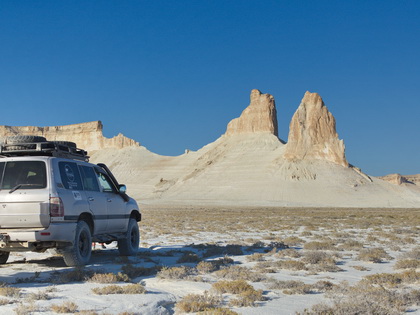Mangystau, Kazakhstan
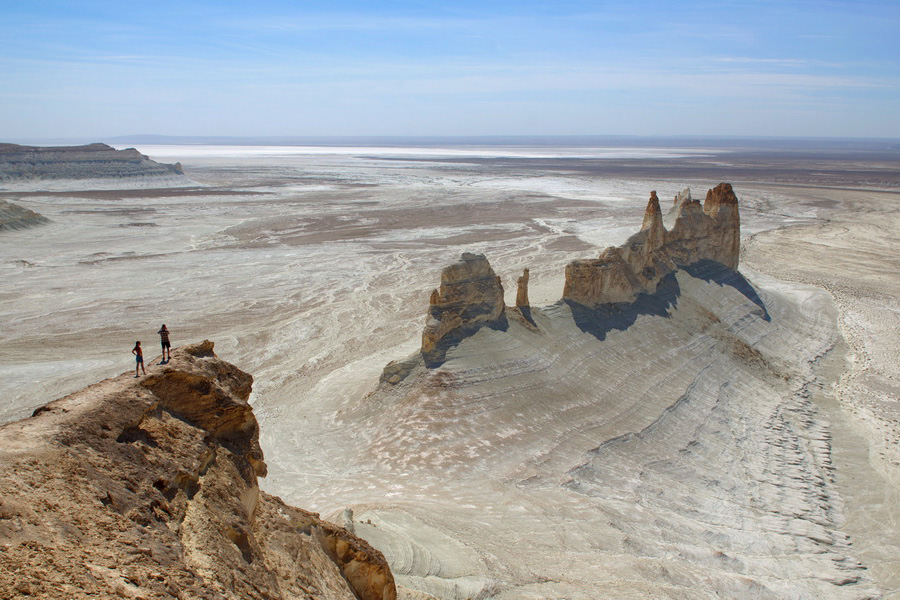
Bozzhyra
Tours, Attractions and Things To Do in Mangystau
Mangystau Travel Guide
Mangystau ia a region (also spelled Mangistau), situated in southwestern Kazakhstan and bordered by the Caspian Sea, is primarily recognized for its rich oil and gas reserves. Its capital is the city of Aktau. Yet, not many are aware of Mangystau's awe-inspiring natural beauty, featuring stunning canyons, cliffs, and mountains. The landscapes here are often likened to Martian terrains – though, instead of red, they're strikingly white. So, if you've been dreaming of an otherworldly experience without awaiting the next big leap in space exploration, Mangystau awaits. Here's how to embark on that journey and what you should set your sights on.
Mangystau Tours
Any Mangystau adventure typically begins in Aktau. From this city, you can venture out to remarkable landmarks like Bozzhyra, Tuzbair, Torysh, Shakpak-ata, and more. These sites are spread across vast distances. While main highways are smoothly paved, many of the region's gems are tucked away deep in the steppe, making off-road vehicles a popular choice for exploration.
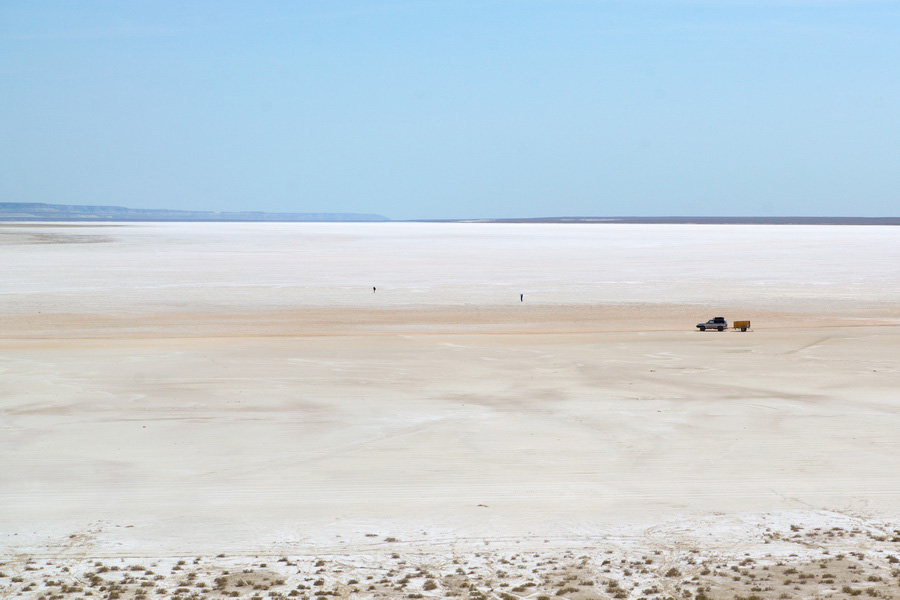 Tuzbair salt marsh
Tuzbair salt marsh
Due to the expansive distances between these tourist spots, it's advisable to set aside 3-4 days just for a taste of Mangystau. To truly immerse yourself and uncover all its wonders, a two-week journey is ideal. Expect daily travels covering hundreds of kilometers, with the potential of crossing the 1000 km mark in just a few days.
History of Mangystau
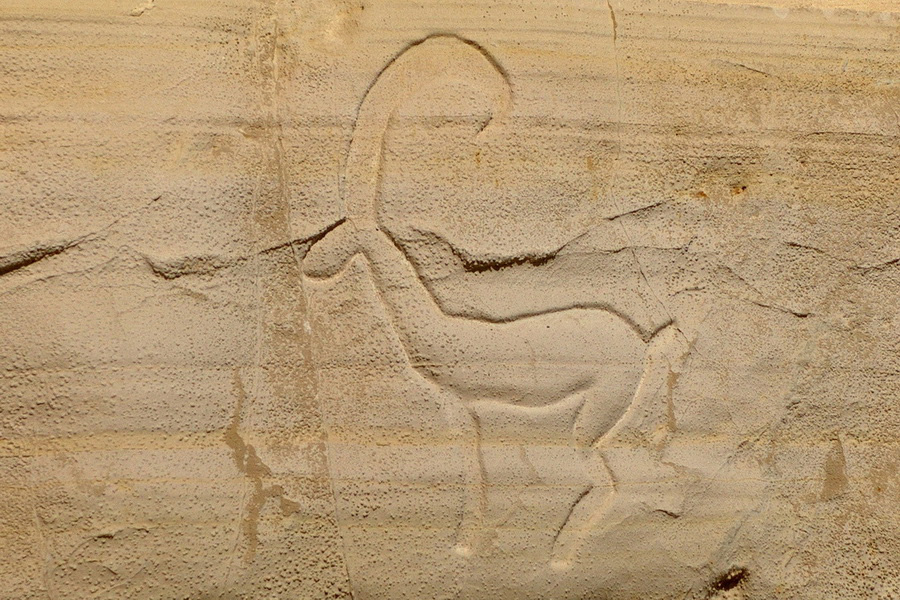 Rock art in Aktau
Rock art in Aktau
Spanning millennia, Mangystau region has often found itself on the fringes of vast empires, primarily due to its absence of abundant rivers and fresh water sources essential for major settlements. Despite this, evidence of ancient human habitation dots the region, with relics of old mosques spanning back nearly a millennium. Fast forward to recent centuries, and this seemingly barren steppe has emerged as Kazakhstan's oil and gas heartland.
Mangystau is also a treasure trove for paleontology and historical geology enthusiasts. With limestone and Cretaceous mountains, layered rock formations, and enigmatic stone orbs exceeding 2 meters in diameter, they echo tales of a time when the entire region lay submerged beneath the ancient Tethys Ocean. Now, even hundreds of kilometers away from the Caspian Sea, one can stumble upon shells and varied fossils.
Dive deeper into Mangystau's history.
Landmarks and Attractions in Mangystau
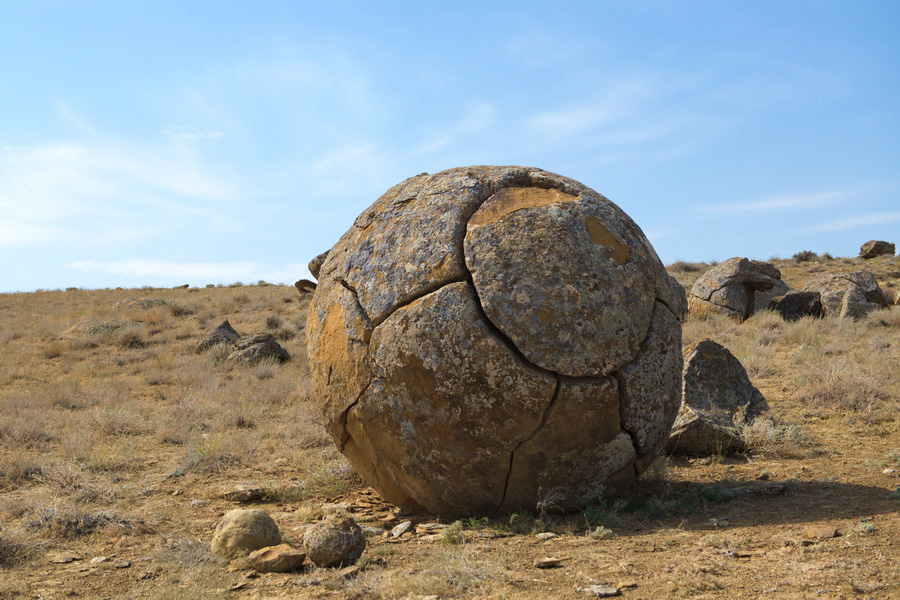 Torysh valley
Torysh valley
Mangystau boasts a myriad of captivating sights, from its distinct landscapes, limestone cliffs, stone orbs, to salt flats and isolated mountainous islands. Among the most renowned sites are the Torysh valley or Valley of Balls, Bozzhyra valley, Airakty castle valley, Sherkala mountain, and the Tuzbair salt pan. These landmarks evoke the eerie beauty of distant, desolate celestial bodies. Accompanying these are countless more geological wonders sculpted by the elements throughout eons. Notably, there's the Karagiye Depression, plunging to -132 meters below sea level, ranking fifth globally.
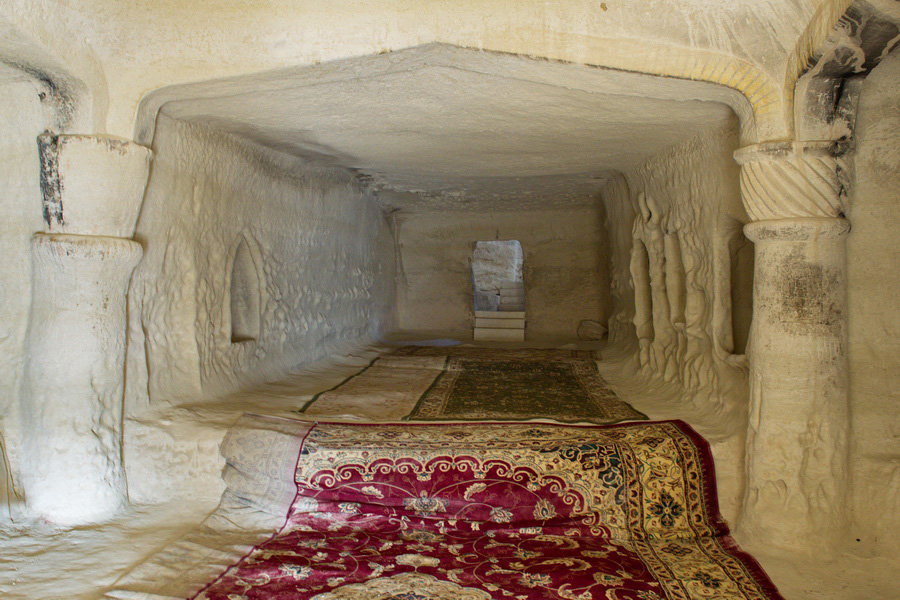 Shakpak-Ata mosque
Shakpak-Ata mosque
Beyond its natural allure, Mangystau is home to sacred sites drawing pilgrims from across Kazakhstan and neighboring nations. Notable among them is the rock-hewn Shakpak-ata mosque, where ancient Sufis once performed mystical healings; the Beket-ata mosque nestled beside a vast canyon; and the Karaman-ata necropolis and underground mosque.
How to Get to Mangystau
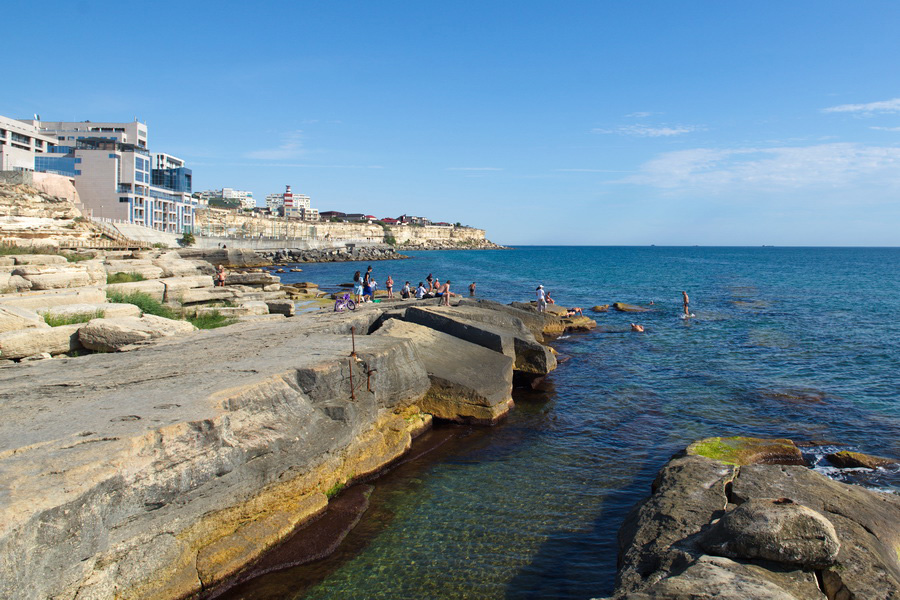 Aktau embankment
Aktau embankment
Mangystau province of Kazakhstan, owing to its isolation even within Kazakhstan, is best approached by flying into Aktau Airport (SCO), a mere 25 kilometers from Aktau city. Daily flights from Kazakhstan's major cities, alongside weekly flights from international destinations like London, Istanbul, Moscow, Baku, Tbilisi, and Kutaisi, provide ample connectivity. This accessibility makes Mangystau an enticing detour on grand tours of the Caucasus and Central Asia.
Alternatively, adventurous souls might opt for a train or car journey to Aktau, but be warned: it's a formidable trek from Kazakhstan's major hubs, often exceeding a day's travel. In August 2024, the Nukus-Aktau international train service was introduced, making it easier to combine the Aral Sea and Ustyurt tour with the broader Mangistau adventure. Historically, Aktau operated as a port with ferry routes to other Caspian Sea ports like Atyrau and Baku. However, these connections no longer exist and aren't slated for revival anytime soon.
Navigating Mangystau
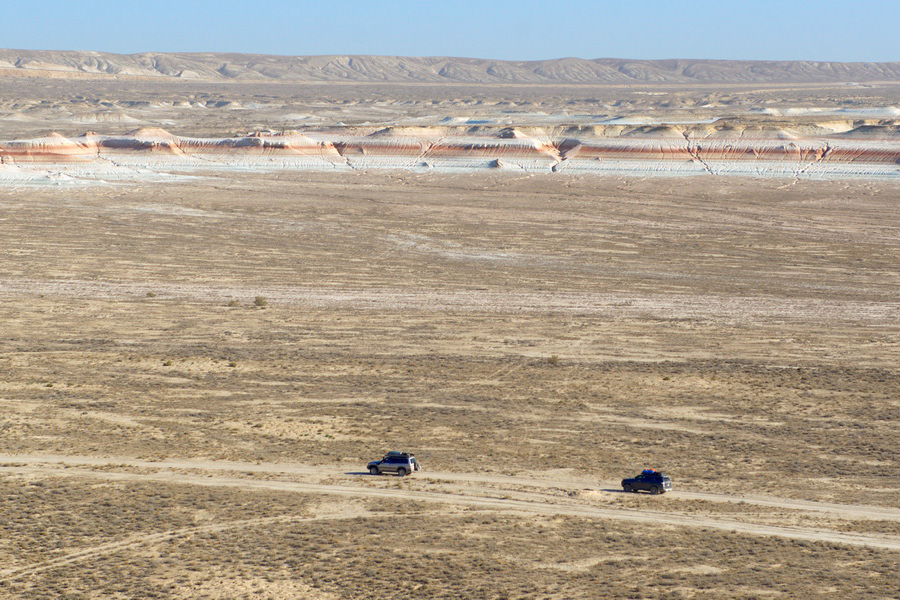 Jeeps on Kyzylkup valley (Tiramisu)
Jeeps on Kyzylkup valley (Tiramisu)
When traveling through Mangystau, your vehicle of choice should be an off-road capable one. While the region boasts hundreds of kilometers of well-paved roads, it also offers a sprawling network of varied-quality dirt roads, ranging from those suitable for sedans to challenging terrains requiring an all-terrain vehicle. Notably, many journeys to popular attractions predominantly involve asphalted routes, with only the final 5-15 km taking you off-road. That said, certain destinations, like the Tuzbair solonchak (salt marsh) and the Karynzharyk depression, will demand navigating vast stretches of the rugged steppe and might challenge even the most robust vehicles.
Safety in Mangystau
 Overnight in Ayrakty valley
Overnight in Ayrakty valley
Venturing off-road into remote, desolate terrains demands vigilant preparation. This extends from ensuring your vehicle is trip-ready to adhering to overnight guidelines in the steppe. To break it down:
- Vehicle Prep: Equip your vehicle with essential field repair tools (like spare tires, jacks, and pumps), and always have extra fuel. For safety, it's recommended to travel with at least one other vehicle.
- Navigation and Communication: A GPS device with pre-loaded regional maps is crucial since many areas lack cellular reception. A satellite phone could be a lifesaver in emergencies.
- Accommodation: While day trips from Aktau allow you to cover a lot, longer explorations might require camping out. A yurt camp is available near some popular destinations in the northern part of Mangystau. For tent camping, heed these tips: avoid setting up near unstable chalk walls or ravines, secure your food, and always bring shoes inside tents to deter unwelcome visits from scorpions or venomous spiders.
- Essentials: Prepare for Mangystau's semi-desert climate by stocking up on sufficient water, hygiene products, sunscreen, sunglasses, headgear, and any other necessities.
Best Time to Visit Mangystau
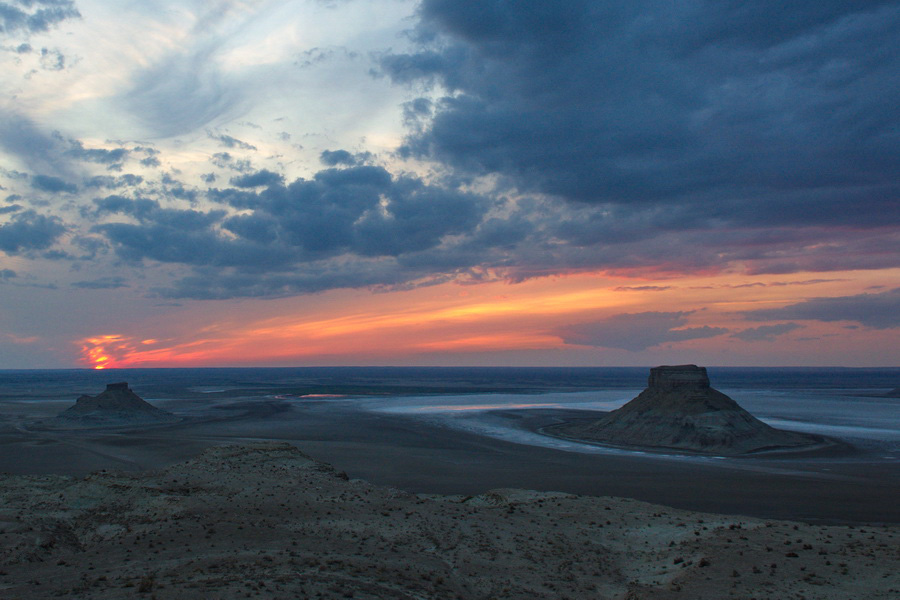 Karynzharyk depression
Karynzharyk depression
Mangystau region sports an arid climate, characterized by its dryness, soaring temperatures, and sparse rainfall. Winters hover around a mild 37.4-39.2°F, while summers often see averages of 78.8-80.6°F. Rainfall, though mostly limited to spring, evaporates swiftly due to the region's geographical nuances. The proximity to the Caspian Sea does grant slightly milder weather patterns. However, Mangystau's persistent, occasionally fierce winds, coupled with periodic dust storms, are worth noting.
For a pleasant Mangystau exploration, spring and autumn stand out as optimal choices. Spring, in particular, paints the steppe in verdant hues for a few weeks. Summer brings intense heat, occasionally breaching 104°F, while winter offers a stark beauty, albeit with the challenge of braving sub-zero temperatures during camping. Regardless of the season you choose, Mangystau promises a uniquely enthralling adventure.


